
Kerria japonica 'Pleniflora' Ranonkelstruik De Tuinen van Appeltern
Meestal is dit in mei. De struik groeit snel en kan 2 meter hoog worden. Ook kan hij vrij bossig worden, daarom is het verstandig om het snoeien goed bij te houden. Bekijk ook onze andere snoeivideo's: Video vlinderstruik snoeien eind maart - begin april Video boerenhortensia snoeien eind maart - begin april Siergras snoeien in maart en april

Kerria japonica (Japanese Kerria, Japanese Rose, Kerria) North Carolina Extension Gardener
Kerria japonica ′Golden Guinea′ Golden Guinea Japanese Kerria. Leaves (1.5-4" long and half as wide) are alternate, simple, ovate-lanceolate, acuminate, double serrate, and bright green. Imbricate small buds are vari-colored. Stems are slender, glossy green, and form a zig-zag pattern. 'Golden Guinea' has crisply textured leaves and bears.
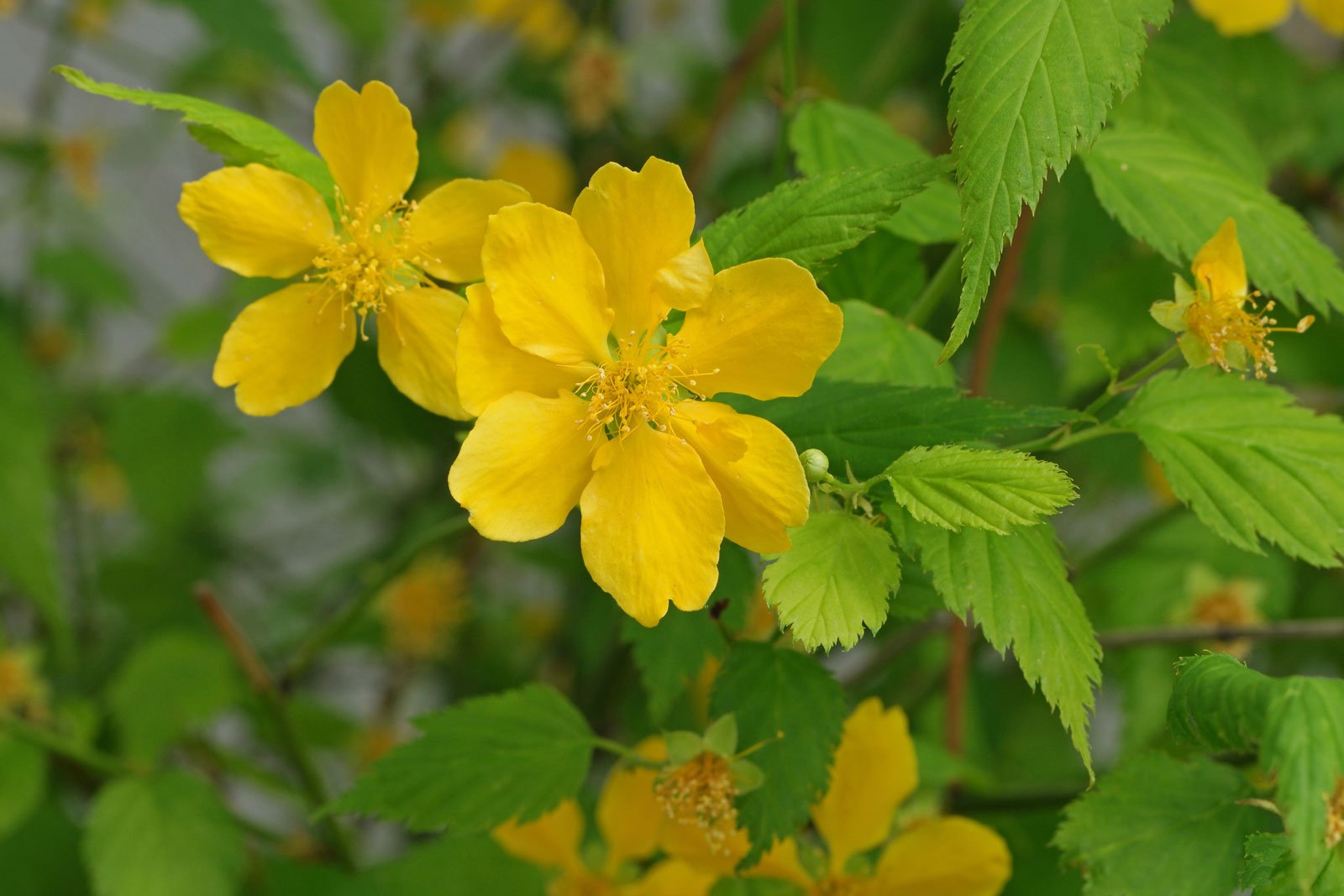
Kerria japonica
Generally pest and disease free. Great for shrub borders, foundation plantings, informal flowering hedges, woodland gardens, and naturalized areas. Blooms on the previous year's wood, so prune in spring after flowering. Promptly remove unwanted suckers. Propagate by semi-hardwood cuttings. Native to China and Japan.

Kerria japonica How to grow & care
Growing Kerria japonica. Kerria japonica, native to Eastern Asia and the only species in the genus Kerria, belongs to the Rosaceae (Rose) family. This easily grown, adaptable shrub displays showy, bright yellow flowers for two to three weeks in spring on slender stems that remain green in winter. Its fine foliage and upright, arching habit are.
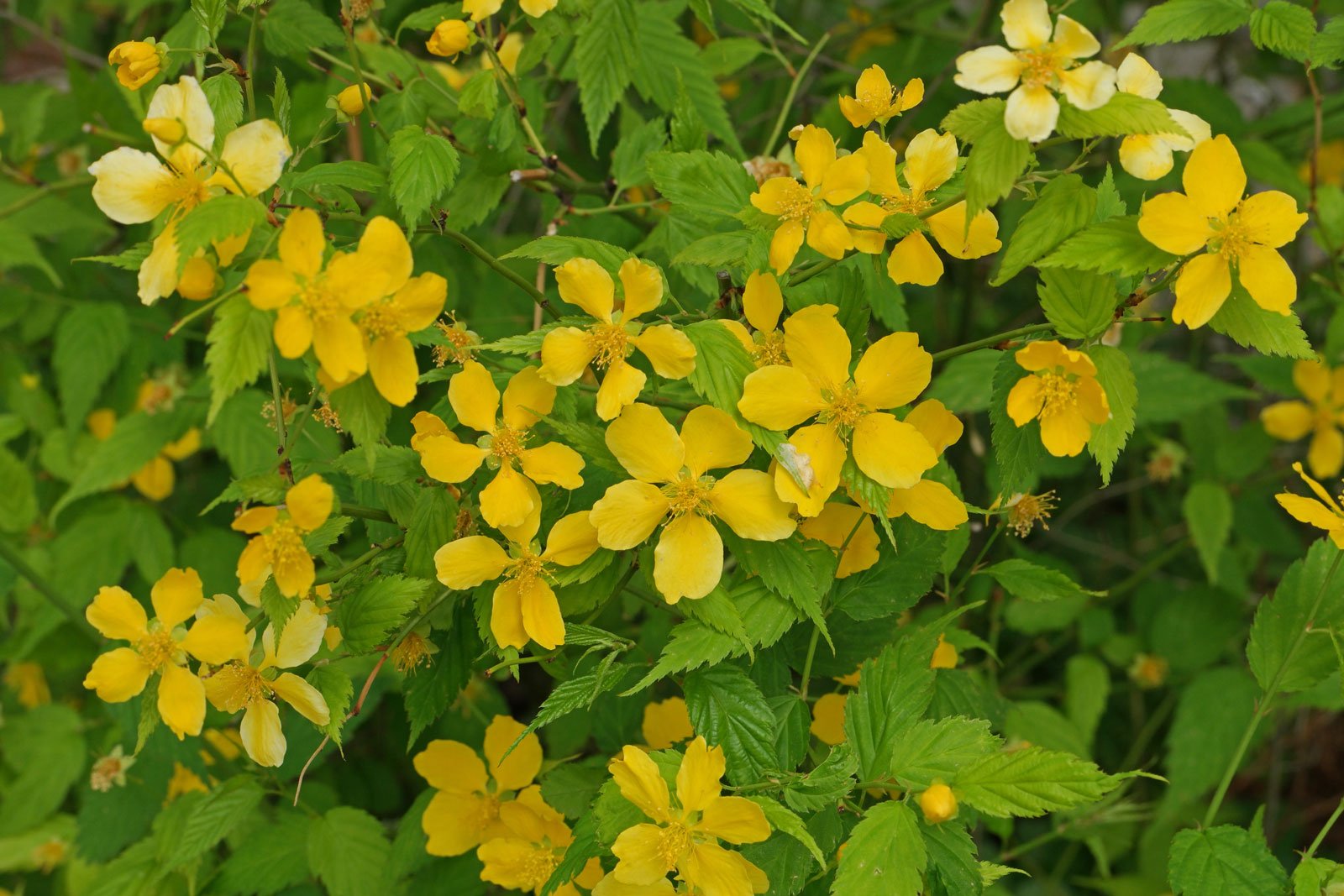
Kerria japonica
last updated March 27, 2023 In spite of its graceful appearance, Kerria Japanese rose, also known as Japanese rose plant, is as tough as nails, growing in USDA plant hardiness zones 4 through 9. Kerria Japanese rose is rarely bothered by pests and tends to be deer resistant. Read on for tips on growing a Japanese Kerria in your own garden.

Kerria japonica (Japanese Kerria, Japanese Rose, Kerria) North Carolina Extension Gardener
Scientific Name: KERRIA JAPONICA: SKU: 1231001097-pc. Container Sizes. Please Note: The pictures below are to give a general representation of the different container sizes. The actual size/ages of plants are estimates and will vary based on; type of plant, time of year, last pruning & many other factors. 4.5" Pot Also Know As:

Kerria japonica ‘Pleniflora’ Falling Water Gardens Plants
Japanese kerria is a lovely 4 to 6 feet high shrub with upright to finely textured arching stems. Plants are especially attractive when their abundant, bright yellow flowers open in the spring. The bright green, arched stems add winter interest in a naturalized garden and it is an excellent choice for perennial shade borders.

Kerria japonica
Height: 4m Spread: 5m Hardy Position Soil Kerria japonica 'Pleniflora' is a vigorous, deciduous spring flowering shrub, perfect for brightening a dark corner or north-facing wall. It will grow almost anywhere and soon develops into a thicket of tall, graceful stems with suckers growing from the creeping roots.
Kerria japonica (Rosaceae) image 16465 at
Kerria japonica 'Pleniflora' Pronunciation: KER-ee-a juh-PON-ih-kuh SKU #05419 5-9 Good to grow! 8 Change Location Find In Store OVERVIEW DETAILS STYLE CARE This Plant's Growing Zones: 5-9 Your USDA Cold Hardiness Zone: 8 Good to grow! Change Location Be Inspired Monrovia's 2nd Annual Inspired Garden Design Awards
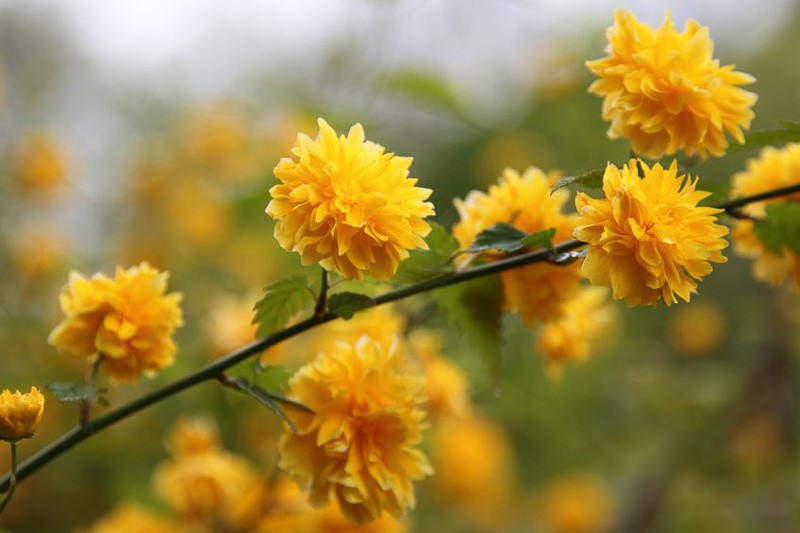
Kerria japonica 'Pleniflora' (Japanese Kerria)
Japanese kerria is a deciduous shrub in the Rosaceae (rose) family that grows natively from central and southern China to southern Korea and Japan. It has upright, arching, slender stems that form a broad, dense, twiggy mass, reaching 7 feet tall and up to 9 feet wide. Japanese kerria is meant for the shade garden, as its flowers fade in full sun.
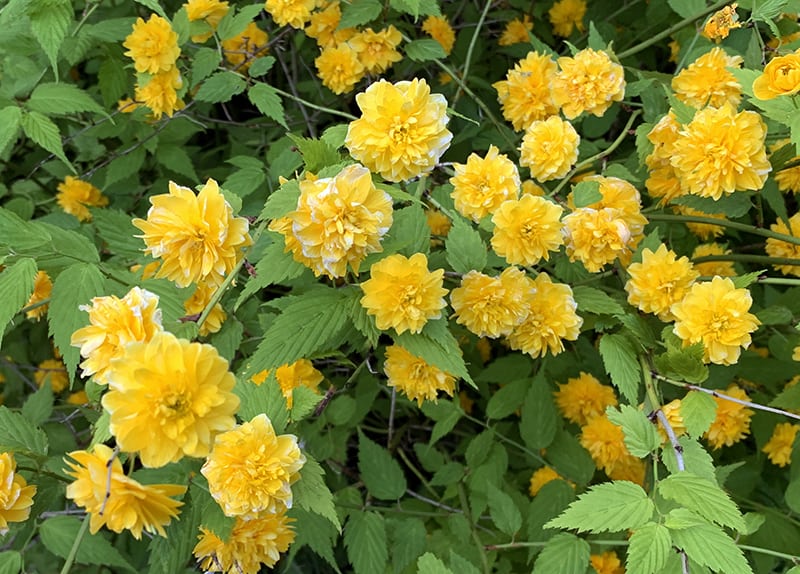
Kerria japonica aka Japanese Kerria
Kerria japonica of Ranonkelstruik is een goed winterharde, bloeiende heester die bloeit in het voorjaar met gele bloemen en eventueel nog een tweede keer later in het jaar. Kerria japonica wordt ongeveer 1.75 m tot 2 m hoog en groeit flink uit in de breedte. De plant is gemakkelijk te houden, zolang de grond maar vochtig genoeg is.
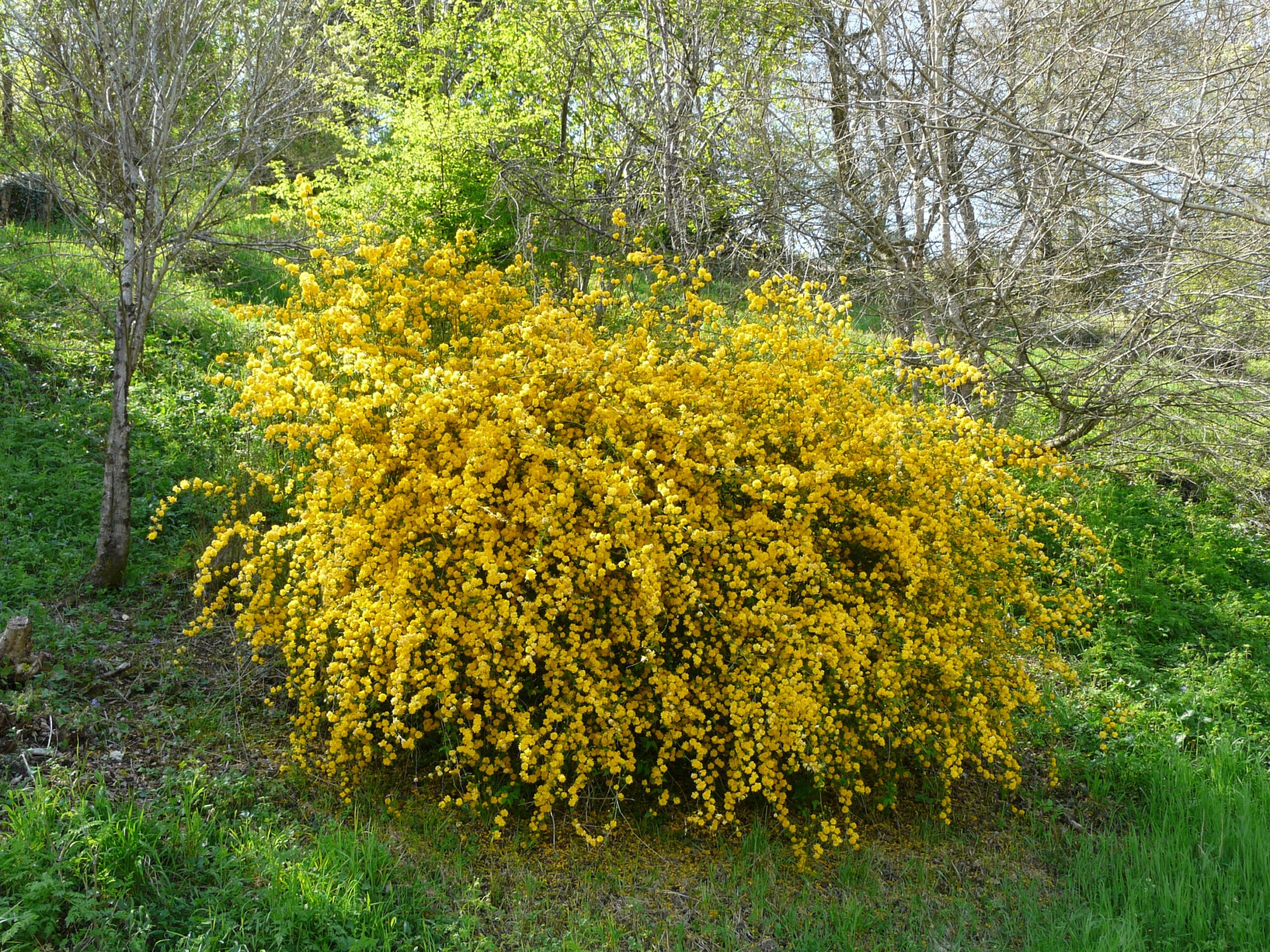
Kerria japonica ‘Pleniflora’ Everglades Nurseries
Planting Tips Care Pests and Problems Propagation If you are looking for a spring-blooming shrub that is resistant to both deer browsing and dry conditions, consider kerria. Also known as the Japanese rose, kerria is an old-fashioned shrub making a comeback in the garden.

Kerria japonica / Ranonkelstruik Ons Kanaal
Kerria japonica, commonly known as Japanese kerria [1] or Japanese rose, [2] is a deciduous, yellow-flowering shrub in the rose family ( Rosaceae ), native to China, Japan and Korea. It is the only species in the genus Kerria. In the wild, it grows in thickets on mountain slopes.

Kerria japonica Golden Guinea
Recommended citation 'Kerria japonica' from the website Trees and Shrubs Online (treesandshrubsonline. org/ articles/ kerria/ kerria-japonica/). Accessed 2023-12-29. Accessed 2023-12-29. More commonly seen in its double-flowered guise ('Pleniflora') this is the typical form of Kerria japonica , raised from ESJE 205 and flowering at Benmore.
Kerria japonica (Rosaceae) image 16460 at
Golden Guinea Japanese Kerria is a hearty, upright, rounded shrub to brighten up your sun or shade border. A twiggy, deciduous shrub with double-toothed, corrugated foliage. Golden yellow, globe-shaped flowers in spring and sporadically appear throughout the growing season. Bright-green stems provide interest all winter. If grown in the sun, it does prefer protection from the late afternoon.
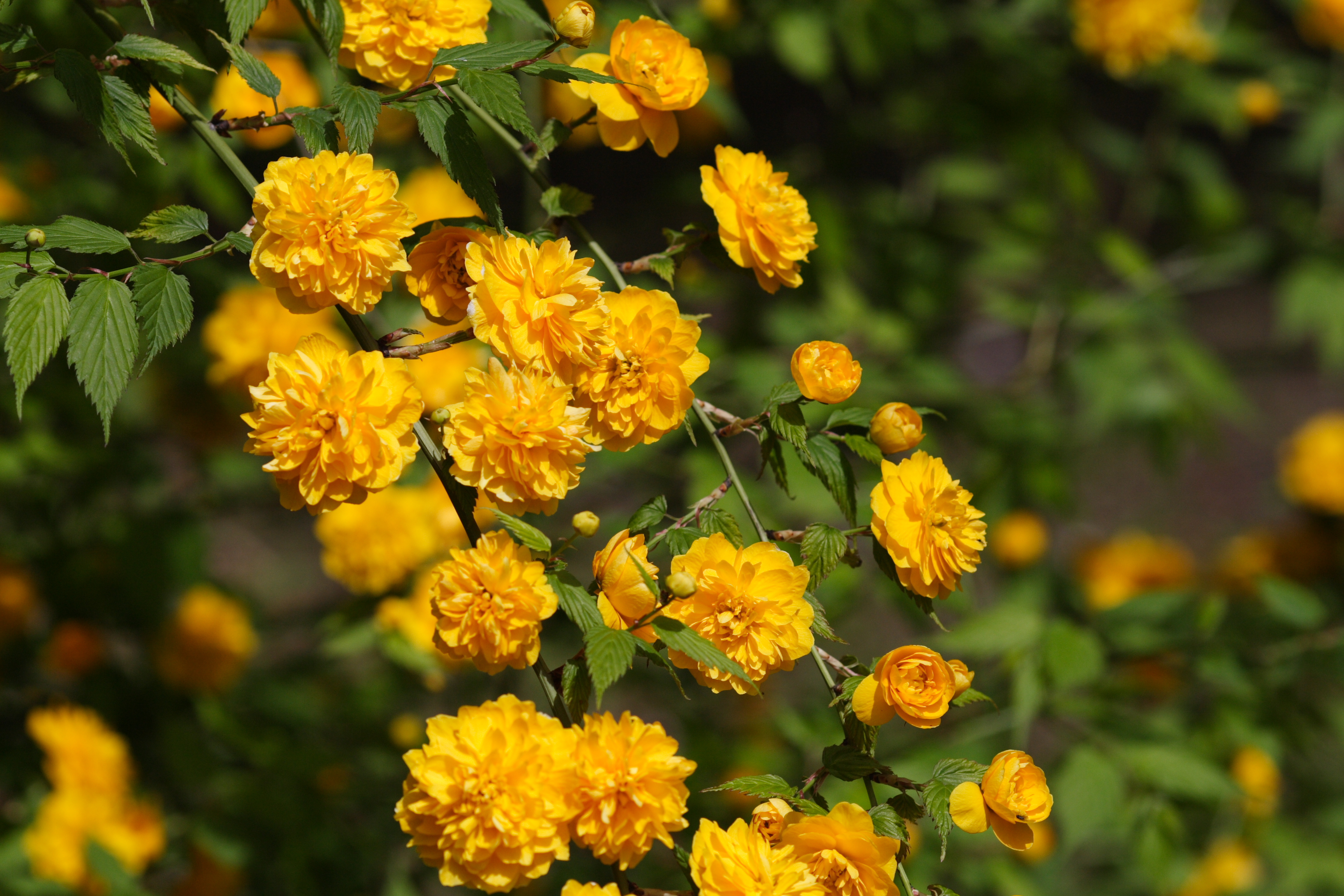
FileKerria japonica 001 JPN.jpg Wikimedia Commons
Noteworthy Characteristics. Kerria japonica, commonly called Japanese kerria or Japanese rose, is a tough-but-graceful, spring-flowering, deciduous shrub that is native to certain mountainous areas of China and Japan.It typically grows to 3-6' tall and to 6-8' wide on slender, arching, yellowish-green stems that remain an attractive green in winter.